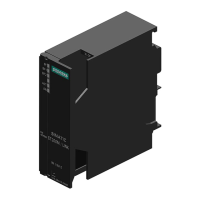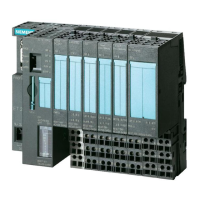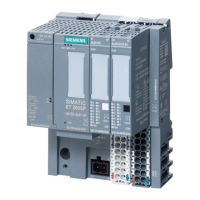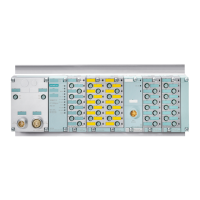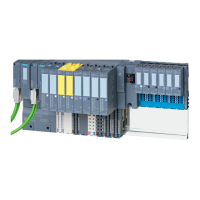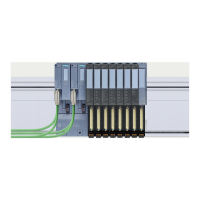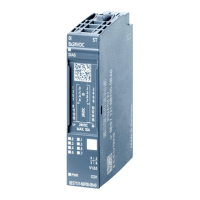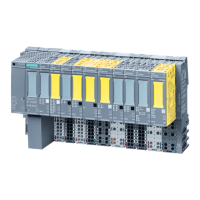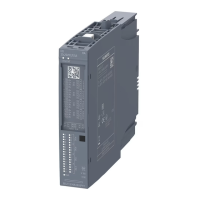The CPU interrupts the processing of the user program and processes the diagnostic block OB56.
The event which led to the triggering of the interrupt is entered in the start information of the
OB56.
7.13.5 Conguration of device diagnostics for PROFIBUS
Table 7-27 Conguration of the device diagnostics for DPV0, S7 DP and DPV1
Byte Description
Byte 0 Station status 1 to 3
See section "Station status 1 to 3 for PROFIBUS (Page 202)"
Byte 1
Byte 2
Byte 3 Master PROFIBUS address
See section "Master PROFIBUS address (Page 204)"
Byte 4 High byte Manufacturer's ID
See section "Manufacturer's ID
(Page 204)"
Byte 5 Low byte
Byte 6
... Byte 11
Identier-related diagnostics
1
See section "Identier-related diagnostics in PROFIBUS (Page 205)"
Byte 12
... Byte 24
Module status
1
See section "Module status in PROFIBUS (Page 206)"
Byte 25
...
Channel-related diagnostics (3 bytes per channel)
1
See section "Channel-related diagnostics with PROFIBUS (Page 207)"
Byte z
...
H status only with S7-400H and standard redundancy
max. 6 bytes
See section "H status with PROFIBUS (only for S7-400H and standard redundancy)
(Page 211)"
up to max. byte 95 Interrupts (only 1 interrupt per device diagnostic telegram possible)
max. 48 bytes
Interrupts are only supported if you congure the ET 200iSP with STEP 7 as S7 DP
or DPV1 device.
See section "Interrupts in PROFIBUS (Page 212)"
1
If you congure with the GSD le, you may deselect this diagnostics.
7.13.6 Station status 1 to 3 for PROFIBUS
Denition
The station statuses 1 to 3 provide an overview about the status of a DP device.
Commissioning and Diagnostics
7.13 Diagnostics with STEP 7 with PROFIBUS
ET 200iSP
202 Operating Instructions, 11/2022, A5E00247483-AK

